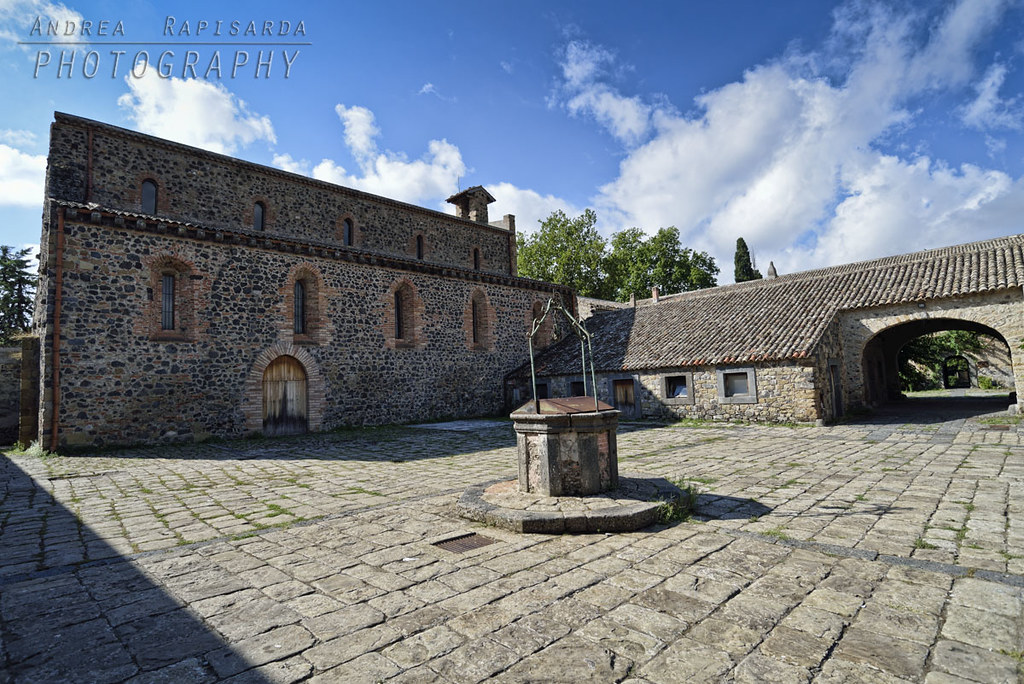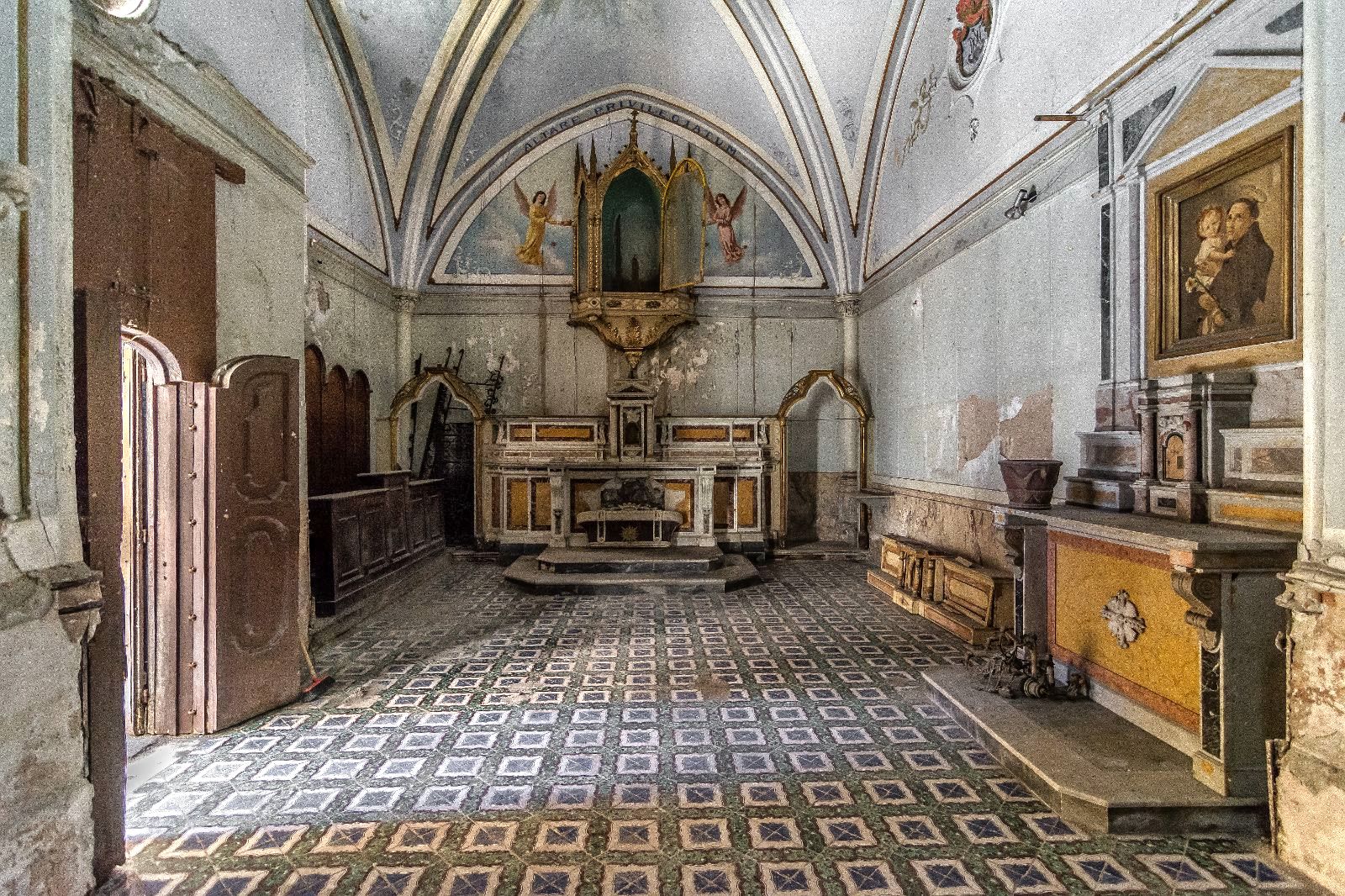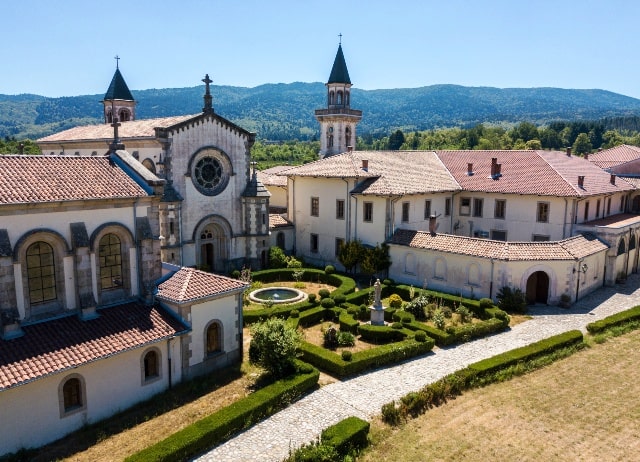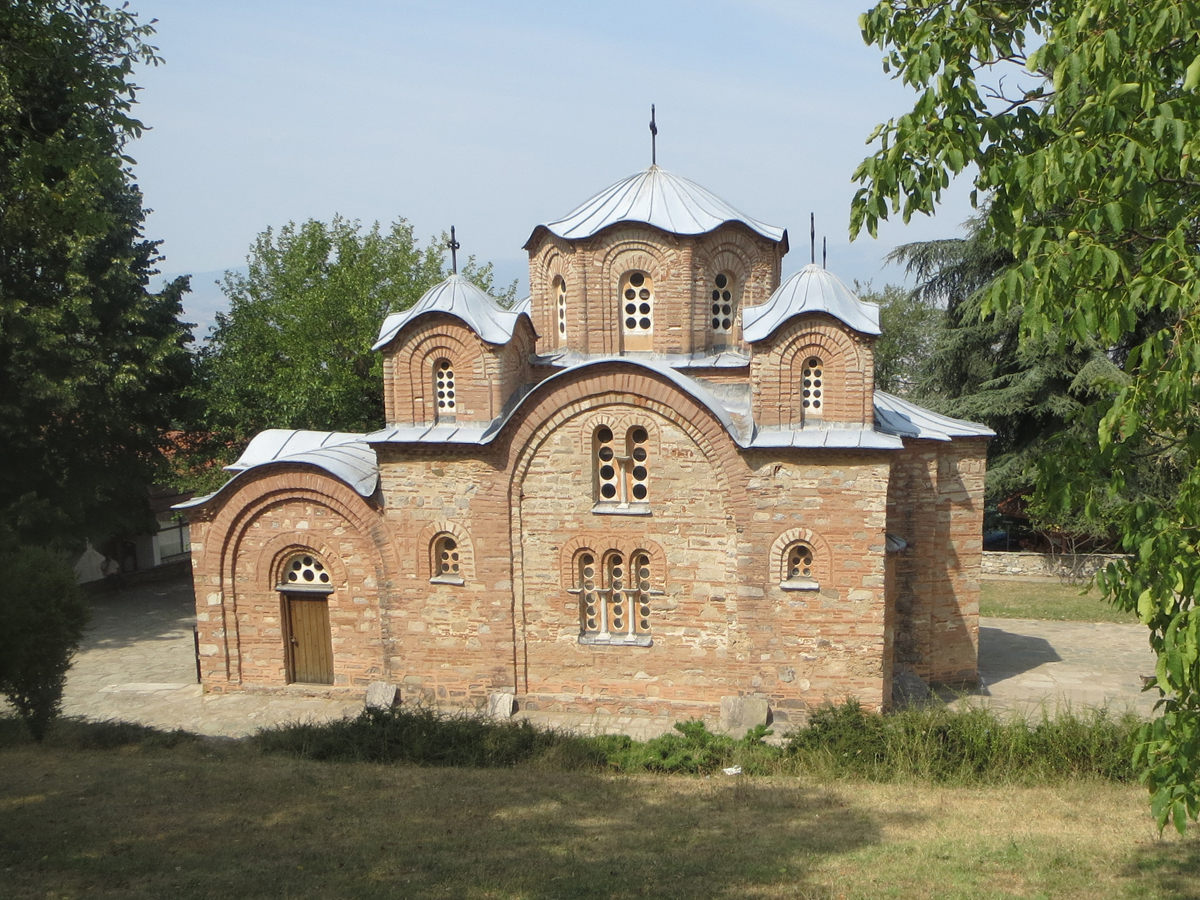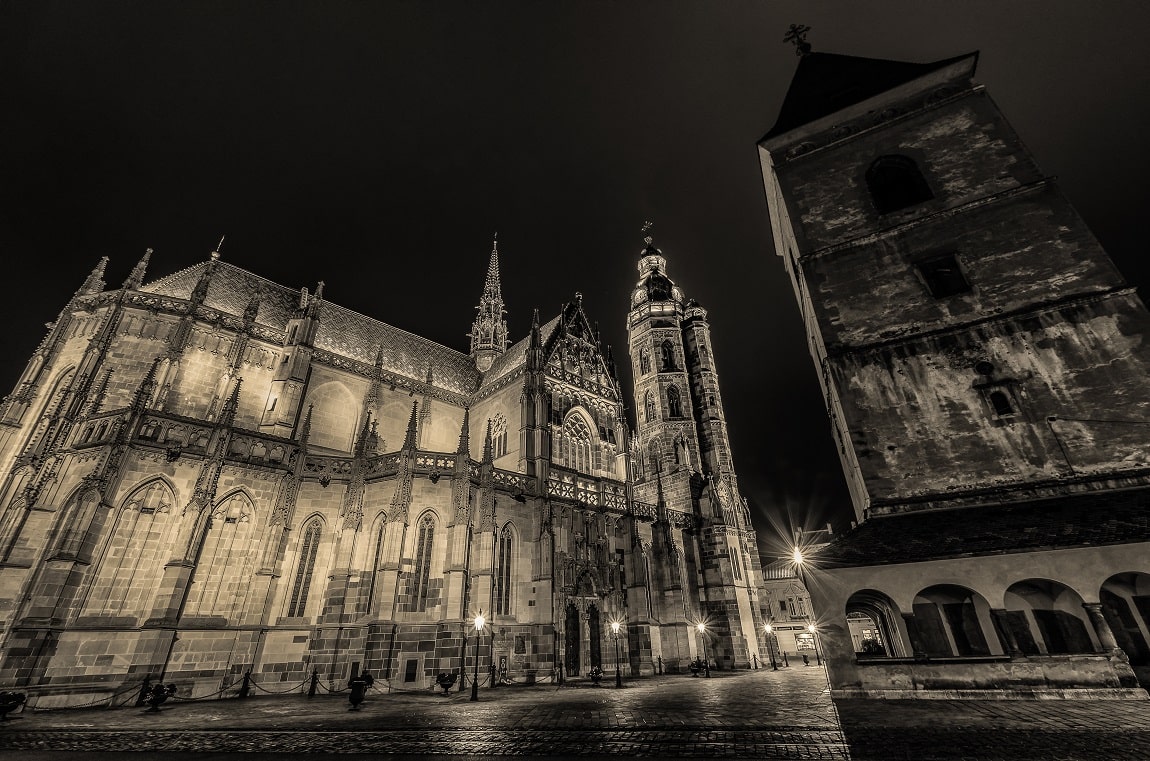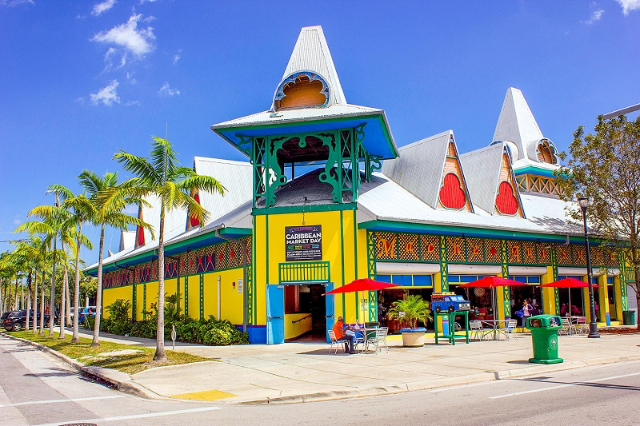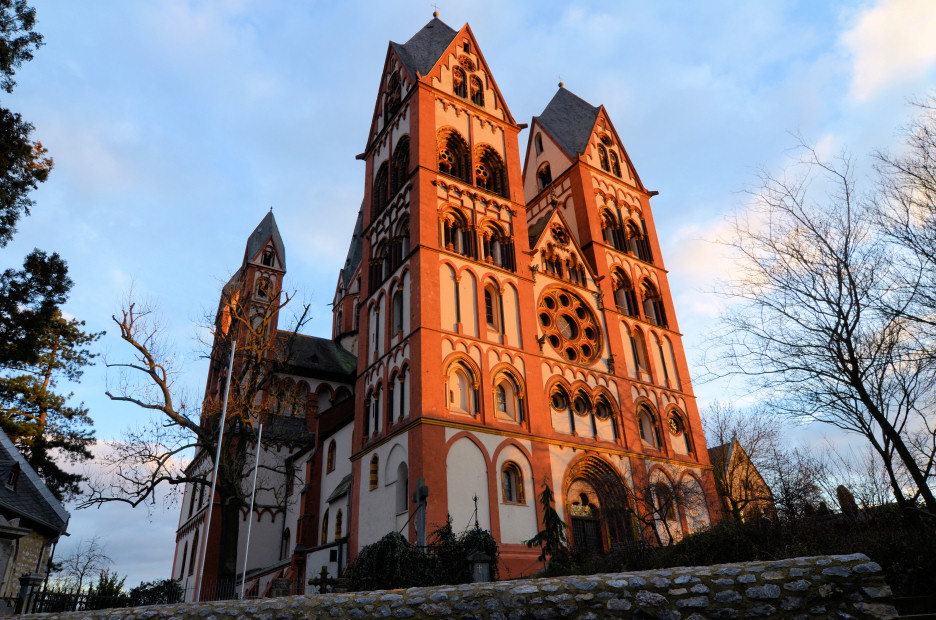The ancient little church of Santa Maria di Maniace was built around the icon of the Madonna placed on the battle site by the Byzantine general Giorgio Maniace. Some remains of it can still be seen, including the apse, which is now inside the abbey’s barn. The new church, built together with the Benedictine convent between 1173 and 1174, in Norman-Gothic style, has an ogival portal of great artistic prestige.
The church is a classic example of Norman-Gothic architecture. The basalt stone colonnade and the trussed wooden roof characterise the layout. The interior is illuminated by eight arched windows, placed above the colonnades. Rebuilt after the earthquake of 1693, the church has lost some original features, together with some precious artistic evidence.
Of the original construction, the pointed arch portal, built with sandstone and marble, is preserved. Of ogival shape, the frame is embellished with shaped cords. The arch is supported by two groups of smooth, round columns, whose capitals depict scenes from Genesis and monstrous, deformed beings inspired by medieval "bestiaries" (according to other theories they represent the deadly vices).
The church houses valuable works, including a triptych painted on wood depicting St. Benedict, St. Anthony Abbot and, in the central altarpiece, the Virgin Mary with Child Jesus; a pyramid-shaped altarpiece depicting St. Lucia and, in the triangular part, the archangel Gabriel; two marble works carved in bas-relief and reproducing the archangel Gabriel and the Virgin Annunziata; a painting on wood of the Madonna and Child.
